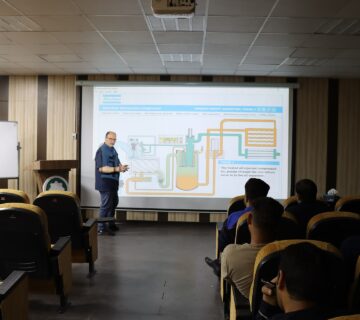Sugar beet is considered one of Iran’s key strategic crops. In addition to supplying sugar for human consumption, it provides raw materials for sugar-related industries, contributes to sustainable agricultural practices, enriches soil nutrients, and improves yields in subsequent crop cycles. This crop rotation model is economically viable for farmers and generates substantial employment opportunities.
Unfortunately, due to the closure of two major sugar factories in Khuzestan province, sugar beet cultivation was suspended for nearly 15 years. However, following continued efforts, limited cultivation was revived, and in 2018, the Middle East Sugar Agro-Industrial Company’s 5,000-ton factory successfully resumed production thanks to its shareholders, management, technical experts, and support from local authorities. This marked a turning point for sugar beet cultivation in the region.
In the 2021 farming year, the company signed contracts with 1,800 farmers to cultivate sugar beet over 10,200 hectares in both spring and fall cycles. The fall harvest yielded over 60 tons per hectare, and the spring harvest surpassed 50 tons per hectare, resulting in 59,000 tons of sugar. This volume covered the annual sugar needs of approximately 1.2 million people, and saved more than USD 33 million in foreign currency.
In addition to sugar, the factory produced around 7,000 tons of dried livestock feed and 12,000 tons of molasses.
The operations created an estimated 20,000 direct and indirect job opportunities. Given the region’s favorable climate, fertile soil, high-quality water resources, and skilled, motivated farmers, the potential for expanding sugar beet cultivation in Khuzestan is substantial.
To meet this opportunity, the company is expanding its processing capacity from 5,000 to 10,000 tons per day, aiming to provide sugar for over 9 million people per day in the next phase with continued governmental support. The corresponding forage output would match production levels over 40,000 hectares.
From a water efficiency perspective, sugar produced per unit of water in fall-cultivated beet is nearly double that of spring beet or sugarcane. This makes fall cultivation particularly important in addressing Iran’s water crisis while increasing agricultural efficiency.
As such, enhanced and coordinated support for farmers cultivating fall sugar beet, and efforts to boost factory efficiency across Khuzestan, are both vital to the future of sustainable sugar production in the region.
Public Relations Department, Middle East Sugar Agro-Industrial Company





بدون دیدگاه